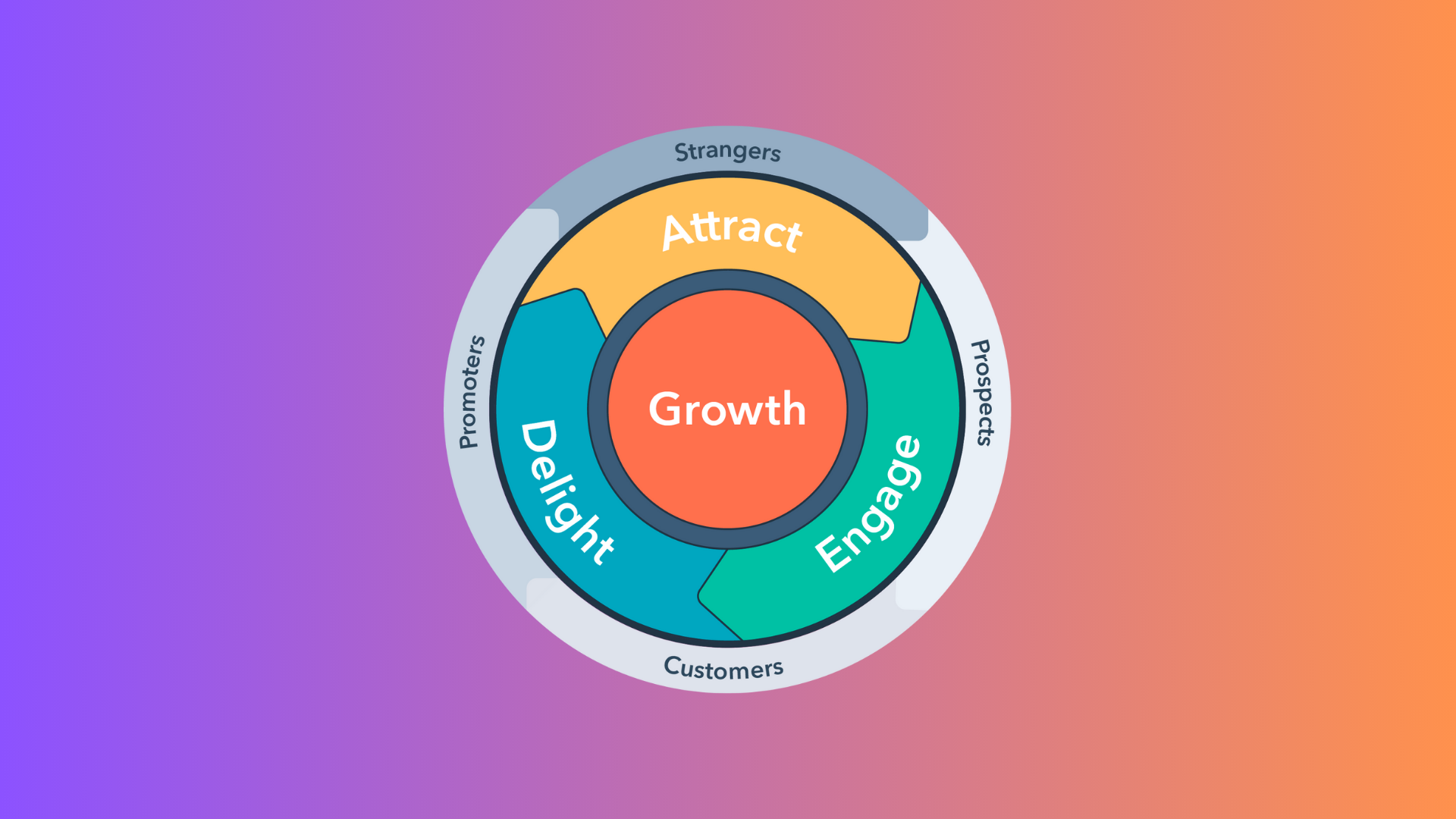E-commerce businesses are consistently looking for ways to drive growth and profitability. One increasingly popular framework is the "e-commerce flywheel" which provides a model for continuous improvement and scaling.
"If you're not growing, you're dying" is a common sentiment in e-commerce. The flywheel provides a way to methodically grow while also boosting profitability.
The concept of the flywheel stems from Jim Collins' bestselling book Good to Great. In e-commerce, the flywheel represents the interconnected elements that drive growth - with each rotation of the flywheel, your business gains more momentum.
By optimizing the various components of the flywheel, merchants can facilitate growth in a sustainable, profitable way. In this guide, we'll explore what an e-commerce flywheel strategy is, how to build one for your business, and how to leverage it to scale new heights. Let's get started!
What is an E-Commerce Flywheel
An e-commerce flywheel is a strategy for continuously driving growth and profitability by linking together key business elements in a self-reinforcing loop. The flywheel concept views a business as an interconnected set of elements that can compound gains over time through reinvestment and optimization.
Rather than relying on one-time tactics, the flywheel strategy focuses on strengthening core business elements like traffic, conversion, customer experience, and margins. Improvements in one area circulate through the flywheel, fueling gains in other areas. This self-reinforcing system makes growth more sustainable over the long term.
The flywheel effect can accelerate growth exponentially when the components continuously feed into each other. The goal is to get the flywheel spinning as fast as possible.
How Does The E-Commerce Flywheel Work
An e-commerce flywheel is powered by momentum. Each component feeds into the next in a continuous loop. When optimized effectively, the flywheel spins faster and faster, compounding growth and profits.
The cyclical momentum occurs across 4 key stages:
- Attract Traffic - The flywheel is initiated by attracting relevant traffic to your e-commerce store through activities like SEO, social media, email marketing, influencers, and paid advertising. More traffic sets the flywheel in motion.
- Convert Visitors to Customers - Traffic alone does nothing unless it also converts. So the next step is optimizing the shopping experience to convert traffic into paying customers through compelling product pages, clear messaging, efficient checkout, promotions, etc. More customers add momentum.
- Delight Customers - Delighted customers drive repeat purchases and valuable word-of-mouth, spinning the flywheel faster. Delighting customers involves quick shipping, responsive support, loyalty programs, and more.
- Optimize Operations - With growth comes challenges and bottlenecks in operations. So the flywheel depends on optimizing operations to fulfill demand efficiently. This means smooth order fulfillment, inventory management, logistics, and other backend processes.
When all components work together, the flywheel circulates leads into customers, loyal customers into advocates, and operational efficiencies into higher profitability. Each turn of the wheel compounds growth and momentum.
How To Build An E-Commerce Flywheel
Building an effective e-commerce flywheel takes strategic planning and execution. Here are the key steps to follow:
1. Identify Your Core Metrics
The first step is to identify the key metrics that matter most to your e-commerce business. These will become the focus areas of your flywheel. Common e-commerce metrics include:
- Traffic
- Conversion rate
- Average order value
- Customer lifetime value
- Customer acquisition cost
- Profit margin
Choose 2-4 metrics that will have the biggest impact on your growth and profitability.
2. Map the Flywheel Components
Next, map out the key components of your flywheel that will impact each metric. For example:
- Traffic - SEO, content marketing, paid ads
- Conversion rate - site speed, UI/UX, on-site search
- Lifetime value - loyalty program, email nurturing
The components will be unique for your business.
3. Identify Key Activities
For each component, detail the specific activities required to improve it. For example:
- SEO - keyword research, content optimization, link building
- Site speed - image compression, caching, CDN
- Loyalty program - tiered rewards, personalized offers
4. Develop Standard Operating Procedures
Create SOPs to standardize the processes for each activity. Document the steps involved and best practices.
5. Assign Ownership
Give clear ownership of each component to help drive accountability. Provide adequate resources and training.
6. Set Improvement Goals
Define specific, measurable goals for improving each component, based on current baselines. Track progress over time.
7. Optimize and Evolve
Continuously review results and fine-tune processes. Double down on what works and quickly eliminate ineffective efforts.
Following these steps will help build momentum in an e-commerce flywheel strategy tailored to your business’s needs and metrics.
Optimizing Each Component of Your Flywheel
Optimizing each component of your e-commerce flywheel is crucial for generating momentum and growth. Here are tips for improving key flywheel components:
Traffic
- Invest in SEO to rank higher in organic search results
- Run paid ads and campaigns on platforms like Facebook, Google, and Instagram
- Partner with influencers and bloggers to drive referrals
- Promote your site and products on social media
- Send email campaigns and retention marketing to existing customers
Conversion Rate
- Improve page load speed and site performance
- Simplify the checkout process and accept multiple payment options
- Show trust symbols like security seals and customer reviews
- Use exit-intent popups and savvy on-site promotions
- Test pricing strategies and sales funnel optimization
Repeat Purchase Rate
- Offer loyalty programs and personalized incentives
- Send triggered emails like abandoned cart recovery
- Make reordering easy with saved details and subscriptions
- Send tailored recommendations based on purchase history
- Provide exceptional post-purchase support and service
Profit Margin
- Negotiate supplier and fulfillment discounts as you scale
- Introduce private-label products with higher margins
- Upsell additional products and warranties
- Reduce fraud, abuse, returns, and chargebacks
- Automate processes to decrease operational costs
Optimizing each area of the flywheel compounds growth and momentum for the entire ecommerce business. A/B tests different options and double down on what works.
Measuring and Tracking Flywheel Effectiveness
To determine if your flywheel strategy is working, you need to closely monitor key metrics related to each component of the flywheel. Here are some of the most important metrics to track:
Customer Acquisition
- Traffic sources - Evaluate where your traffic is coming from to identify your most effective acquisition channels.
- Conversion rate - Calculate the conversion rate from visitor to customer to see if your website experience is optimizing conversions.
- Cost per acquisition - Measure how much you are spending to acquire each new customer and aim to reduce it over time.
Customer Experience
- Net Promoter Score - Survey customers on their likelihood to recommend you to understand satisfaction.
- Repeat purchase rate - Monitor what percentage of customers buy from you more than once.
- Customer service metrics - Track CS resolution times, satisfaction, etc.
Customer Retention
- Churn rate - Calculate the percentage of customers lost over a given period.
- Retention rate - Flip churn rate to measure the percentage of retained customers.
- Repeat purchase frequency - Track how often retained customers purchase.
Referrals
- Referral percentage - Calculate the percentage of new customers who came via referrals.
- Referral program engagement - Monitor signups and participation in formal programs.
- Referral incentives - Assess the effectiveness of incentives and optimize accordingly.
Profitability
- Customer LTV - Track the lifetime value of customers to quantify their monetary value.
- Margins - Monitor product and channel profit margins.
By regularly analyzing these metrics, you can determine where your flywheel is strong versus needs optimization. Adjust each component to maximize flywheel velocity.
Recommended: Create An E-Commerce Profitability Flywheel
In the world of e-commerce, profitability is not just about generating revenue but also about sustaining profit in the long run. The profitability flywheel offers a roadmap to break free from the profitability death spiral and create a sustainable path to profitability.

Source: Pattern
Here’s a step-by-step breakdown.
Step 1: Build a Strong Brand and Cultivate Brand Loyalty
The first step to boost e-commerce sales and profit is to build a strong brand and cultivate brand loyalty among customers.
Investing in brand-building activities, such as creating a compelling brand story, unique value proposition, and consistent brand identity, helps differentiate your business from competitors and create a loyal customer base.
By providing exceptional customer experiences, fostering emotional connections, and maintaining high-quality products or services, you can enhance customer loyalty and drive repeat purchases.
Step 2: Optimize Operations for Efficiency and Cost Effectiveness
To achieve profitability, it's essential to optimize operations for efficiency and cost-effectiveness. This involves streamlining processes, leveraging technology and automation, and carefully managing supply chains and inventory.
By optimizing backend operations, businesses can reduce overhead costs, improve productivity, and increase overall efficiency.
Additionally, using data analytics and insights can help identify areas of improvement, streamline marketing efforts, and make data-driven decisions that lead to higher profitability.
Step 3: Diversify Sales Channels and Expand Market Reach
Expanding your market reach and diversifying sales channels is another crucial step toward boosting e-commerce sales and profit. Relying solely on one platform or distribution channel can limit your growth potential and leave you vulnerable to market fluctuations.
By exploring multiple sales channels, such as online marketplaces, social media platforms, and direct-to-consumer websites, you can reach a wider audience and tap into new customer segments.
Additionally, targeting international markets can open up new opportunities for growth and revenue.
Understanding Amazon's Flywheel Strategy for eCommerce Success
Amazon’s Virtuous Cycle Strategy, often referred to as the Amazon Flywheel, is an exemplary model for eCommerce business owners aiming to enhance customer experience and drive growth.
The Foundation of Amazon's Flywheel Strategy
Amazon's founders sought a marketing model that would create an exceptional customer experience for their eCommerce platform. The key elements of Amazon's virtuous cycle include:
- Low Prices: Offering competitive prices to attract customers.
- Extensive Selection: Providing a vast array of products.
- Superior Delivery Experience: Ensuring quick and reliable delivery.
These elements collectively drive substantial organic traffic to Amazon's website.
Leveraging Traffic for Enhanced Customer Experience
What sets Amazon apart from other eCommerce platforms is its integration of third-party sellers. This approach allows Amazon to offer an even broader selection of products within each category, significantly enriching the customer experience.
Breaking Down Amazon’s Flywheel
Amazon’s flywheel can be summarized with two core components:
- Lower Cost Structure: Amazon continuously reinvests revenue into the business to reduce prices further, expand product selection, and improve inventory management.
- Improved Customer Experience: As prices drop and the range of products increases, customer satisfaction and loyalty grow, fueling further traffic and sales.
By focusing on these elements, Amazon has created a self-reinforcing cycle that enhances customer experience, drives growth, and maintains its competitive edge in the eCommerce market.
Wrapping up!
In summary, implementing an e-commerce flywheel strategy can have tremendous benefits for growing an online business and boosting profitability over time.
The key is to view your business as an integrated system rather than a collection of disparate parts. Each component should feed into the next, compounding growth and creating a positive feedback loop.
With the flywheel spinning faster, customer acquisition costs decrease while lifetime value increases.
If you need help assessing your e-commerce business and constructing an effective flywheel framework, XgenTech offers specialized consulting services.
Contact us today to discuss how we can create a custom e-commerce flywheel strategy tailored to your brand's specific goals and needs. Our team of experts can set your flywheel in motion for long-term e-commerce success.




